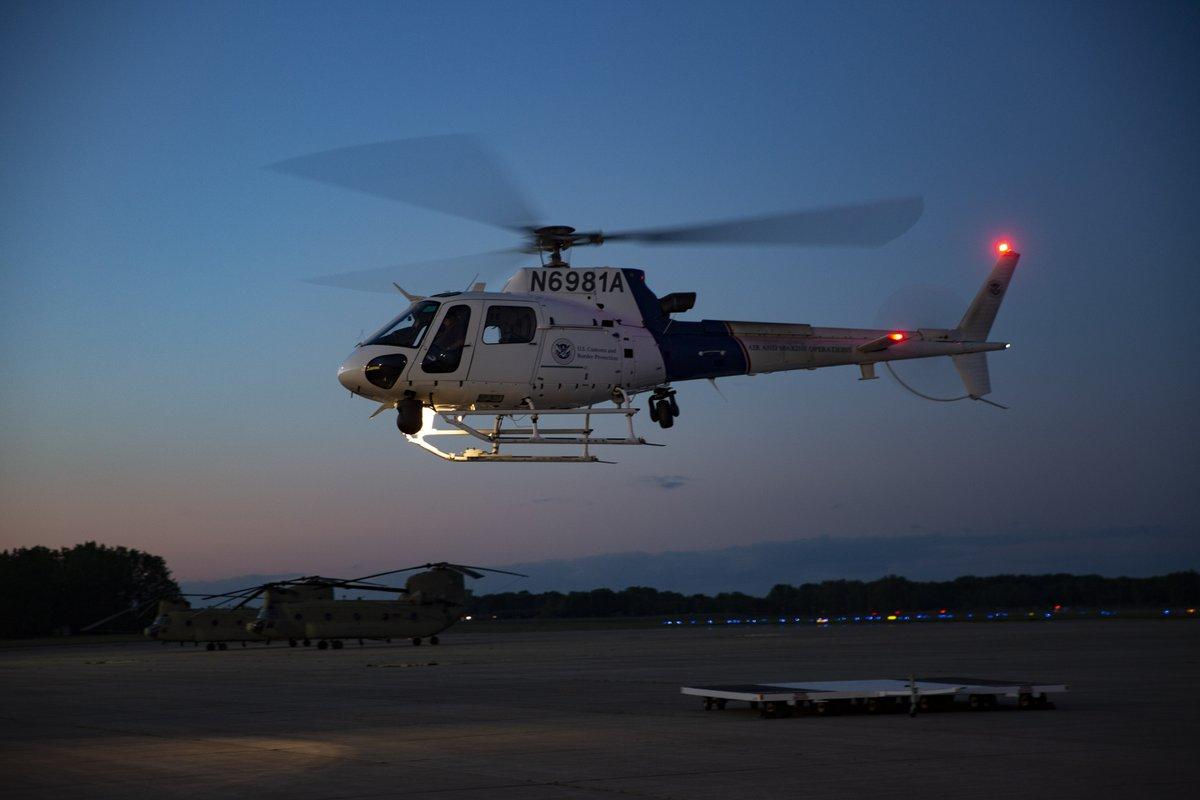
Low-flying helicopters responding to protests in the city’s downtown June 1 were involved in a “military operation,” according to the FAA, which has not announced any sanction of the operators for potentially violating federal aviation regulations.
Social media accounts from witnesses described seeing Airbus Helicopters UH-72A Lakota and Lockheed Martin/Sikorsky UH-60 Black Hawk helicopters flying at low level over the city, apparently using their rotor downwash to disperse crowds of protesters.
Asked if the helicopters might have violated the agency’s Part 91 general operating and flight rules, the FAA referred the inquiry to the Pentagon. A U.S. Army spokesperson referred questions to the District of Columbia National Guard, which operates both helicopter types.
The D.C. National Guard indicated that it would issue a response to questions, but had not replied by late afternoon June 2.
Under its Part 91.119 regulation, the FAA prescribes a minimum safe altitude for aircraft flying over congested areas of any city, town or settlement of 1,000 ft. above the highest obstacle within a horizontal radius of 2,000 ft. of the aircraft. Because of their unique characteristics, helicopters may fly at less than minima “if the operation is conducted without hazard to persons or property on the surface.”
The low-flying flights apparently were ordered by the White House or an agency associated with the president’s residence. The FAA designates “P-56” flight-prohibited areas in Washington surrounding the White House, the National Mall and the vice president’s residence outside of the downtown area.
The only aircraft that are allowed to fly within these prohibited areas “are specially authorized flights that are in direct support of the U.S. Secret Service, the office of the president” or one of several government agencies requiring air support within the P-56 area, according to the agency.
The deployment of military helicopters in an urban setting represented a stepped-up federal response to the major protests and spiraling violence and looting in numerous U.S. cities after the death of George Floyd at the hands of Minneapolis police on May 25. The flights followed a brief Rose Garden speech during which President Trump threatened to use the U.S. military to quell rioting in multiple states.
National Guard troops from Indiana, South Carolina and Tennessee were expected to join the response effort in Washington on June 2 to reinforce a fully activated D.C. Guard and members of the New Jersey and Utah Guard already on the ground for a total of approximately 3,000 soldiers, Air Force Gen. Joseph Lengyel, who serves as chief of the National Guard Bureau, told reporters.
The president serves as commander-in-chief of the D.C. National Guard, because the district is not a state. According to the Guard bureau, troops coming from other states are Title 32 502(f) status, meaning they are federally funded but remain under the authority of their state governors.
More than 100,000 National Guard troops are now activated for missions across the U.S., the most since Hurricane Katrina in 2005, Lengyel said. “Obviously this is a very historic response from the National Guard,” he added.
Also briefing reporters, a senior Pentagon official said National Guard members were not equipped with nonlethal weapons such as rubber bullets or tear gas. However, some troops did carry long rifles and side arms to support police.
“There were 1,200 National Guard forces deployed throughout the district last evening, but there were far more law enforcement,” another senior Pentagon official said.
Active-duty troops deployed to the Washington metropolitan area on June 1 remained outside the city. These service members have not been ordered to support law enforcement in the district and are residing at bases near the city. “There are active-duty forces in the area, placed on a short alert status,” a Pentagon official said.
The intention is to limit the military protest response to the National Guard. This would avoid violating the Posse Comitatus Act, which prevents Title 10 active-duty troops from being used for domestic law enforcement. “We really would like to see this stay a National Guard response to the degree that we have to put any uniformed forces against it,” an official said.
In a June 2 call with reporters, House Armed Services Committee Chairman Adam Smith (D-Wash.) said he is concerned by Defense Secretary Mark Esper characterizing the U.S. cities afflicted by protests and riots as “battlespace” and will schedule a public hearing as soon as possible on the military’s role in pacifying civil unrest.
“Talking about the United States of America as a battlespace for the U.S. military [to occupy] is wrong,” Smith said. “I would like them to say, ‘Yeah, we got a little over exuberant here. That is not the way we should handle this.’”
Smith said he supports the use of the National Guard to assist law enforcement agencies, but not active-duty forces.
Esper and Chairman of the Joint Chiefs of Staff Gen. Mark Milley could testify before Congress as early as next week. Smith wants to hear from the duo directly on President Trump’s call for deploying active-duty troops to assist law enforcement.
“We feel that is the wrong approach, the wrong use of the military. It is more likely to escalate the conflict, rather than bring down the violence and we are very concerned about the optics of using the U.S. military for domestic law enforcement,” Smith said.
The deployment of D.C. National Guard helicopters was only one aspect of a response to the protests that also involves federal agencies including Customs and Border Protection (CBP), a constituent agency of the Department of Homeland Security.
In a May 31 post on Twitter, CBP Acting Commissioner Mark Morgan said the agency was deploying personnel and aviation assets across the country at the request of other federal, state and local law enforcement agencies. “CBP carries out its mission nationwide, not just at the border, consistent with federal laws,” he added.
Morgan provided more specifics in a June 1 post, tweeting that CBP’s Air and Marine Operations (AMO) division was responding to law enforcement requests to provide “situational awareness” in Washington, D.C., Buffalo, Chicago, Detroit, El Paso, Miami and San Diego. AMO agents providing air support in Buffalo helped track and apprehend suspects in an SUV that had struck a New York State Trooper and a city police officer during protests in that city, Morgan later said.
One of Morgan’s posts included a photo of a single-engine AS350B3 (Airbus Helicopters H125) with a bottom-mounted sensor turret. The CBP declined to specify which aircraft types it operates are supporting local agencies.
According to media reports, one of the agency’s MQ-9 Predator B unmanned aircraft based at Grand Forks Air Force Base in North Dakota overflew Minneapolis on May 29.
“It would not be appropriate to disclose law enforcement operational specifics which could jeopardize operational security. Be advised that any of them may be supporting [law enforcement] depending on the region,” the CBP said in response to an inquiry.







Comments